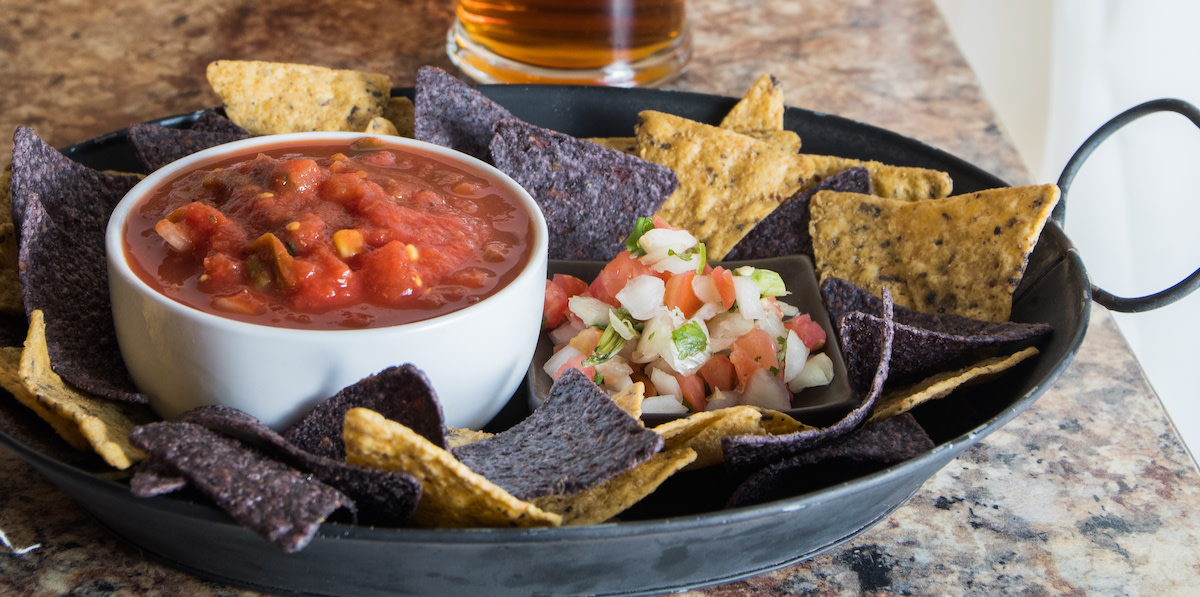Learn the Difference Between Pico De Gallo and Salsa
Written by MasterClass
Last updated: Sep 13, 2021 • 3 min read
Despite their differences, both salsa and pico de gallo are flavorful accouterments commonly used on burritos, quesadillas, and even scrambled eggs. They can make a great addition to appetizers, served with tortilla chips and guacamole, or used to top grilled chicken or carne asada in a main dish.
Learn From the Best
What Is Salsa?
Salsa is a blend of chopped tomatoes, white onion, salt, lime, cilantro, peppers (like serrano or jalapeño for extra heat), and garlic cloves. Tomato salsa can consist of fresh, canned, or cooked tomatoes as its base, though many restaurant salsa fans use a combination of both in their homemade salsa recipes. Certain salsas can even be made of just peppers and chiles.
Some different types of salsa include:
- Salsa verde: Salsa verde—literally “green sauce” in Spanish—is the ubiquitous tomatillo salsa that adds tangy sweetness to tacos and countless other Mexican dishes. Mexican salsa verde is sometimes referred to as tomatillo salsa or green salsa stateside.
- Charred salsa: All of the ingredients in this rich, smoky salsa tatemada are blistered on a hot comal before they’re combined in a molcajete (a Mexican-style mortar and pestle made from volcanic stone). The name of this salsa comes from the word tatemar (to grill) which itself comes from the Nahuatl tlatemati (to burn).
- Salsa brava: The name of this salsa recipe translates to “fierce,” and with good reason—the raw habaneros featured are super spicy. That said, salsa brava is a quick-pickled salsa with a bright, fresh flavor that pairs well with seafood and Mexican foods like tostadas, sopes, tacos and your choice of meat. Salsa brava brings more pungency to the table than something like salsa verde, which typically relies on jalapeño peppers and cilantro for its flavor.
- Guajillo chile salsa: Guajillo chile salsa is a Mexican sauce made from dried guajillo chiles. Guajillos are large, thin chiles that have bright red skin and a mild kick with some natural sweetness and a touch of earthy flavor. The flavor profile of these chile peppers is rich, tannic, and slightly smoky.
What Is Pico de Gallo?
Pico de gallo is a raw, fresh salsa, also known as salsa fresca (fresh sauce), salsa cruda (raw sauce), or salsa Mexicana. Pico de gallo primarily uses cubed or diced tomatoes blended with white or red onion, fresh lime juice, chile peppers, and fresh cilantro leaves.
What Is the Difference Between Pico de Gallo and Salsa?
These two tomato-based condiments are often used interchangeably to flavor food or dip chips into. However, there are a few key differences between pico de gallo and salsa.
- Salsa has more liquid than pico de gallo. Pico de gallo has far less liquid than salsa. Though salsa can be made chunky, the tomatoes are often blended with the other ingredients, making it runnier than pico de gallo.
- Pico de gallo is always made fresh. While pico de gallo is technically a type of salsa, it is usually made with fresh ingredients. While salsa can be made using canned or cooked tomatoes, there are fewer variations for how to make pico de gallo.
- Salsa can be made with more ingredients than pico de gallo. Tomatoes for salsa can be roasted or charred before blending with different ingredients. You can even make a tomatillo salsa (or salsa verde) for a completely different flavor. However, pico de gallo is typically made from a set list of ingredients including tomatoes, onions, lime juice, and cilantro.
- Salsa is prepared differently than pico de gallo. Pico de gallo is a simple mixture of freshly-chopped ingredients. Salsa, on the other hand, almost always involves a food processor to transform the ingredients into a smoother, pureed form. (You can also use a food processor to make pico de gallo can, but too much processing will reduce your ingredients to mush).
Want to Learn More About Cooking?
Become a better chef with the MasterClass Annual Membership. Gain access to exclusive video lessons taught by the world’s best, including Gabriela Cámara, Chef Thomas Keller, Yotam Ottolenghi, Dominique Ansel, Gordon Ramsay, Alice Waters, and more.
